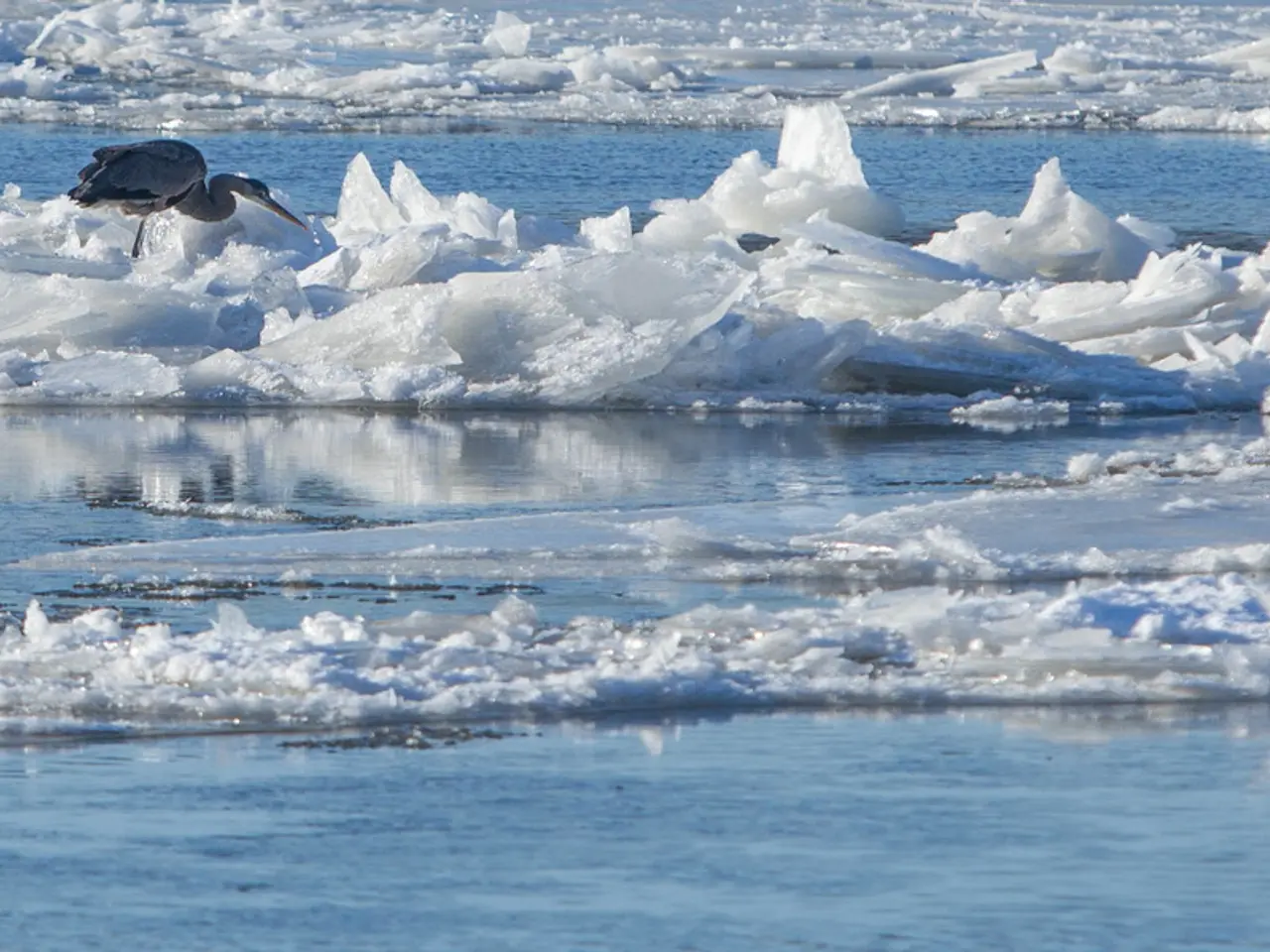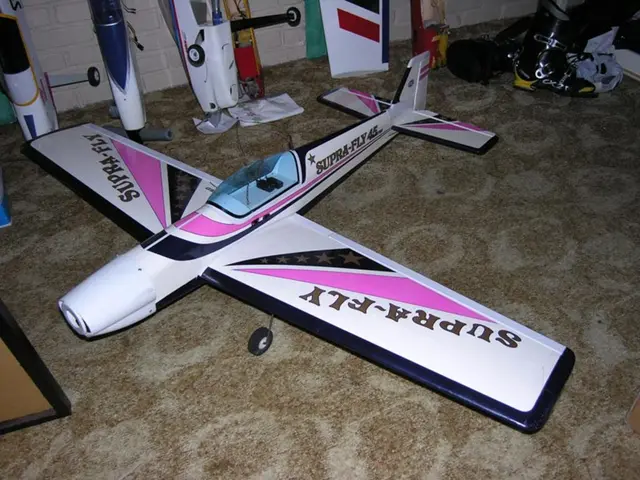Autonomously Propelled Ice Formations Encouraged by Innovative Engineering Methodology
Researchers at Virginia Tech have made a groundbreaking discovery: they've found a way to make ice move by itself on a herringbone-patterned metal surface. This self-propelling ice disk could potentially pave the way for new methods of energy harvesting.
The researchers claim their surfaces may have the fastest ice on the planet, moving without external forces like wind. The movement is captured in a video showing an ice disk moving across a metal plate.
The self-propulsion occurs due to an asymmetrical herringbone pattern etched into the metal plate, which directs meltwater flow. When ice melts and refreezes, it can move without external forces, a contrast to previous studies. This movement is similar to tubing on a river, according to Jack Tapocik, a Ph.D. student in mechanical engineering at Virginia Tech and co-author of the study.
The ice moves due to a slingshot effect created by a mismatch in surface tension when a flat puddle forms on one side of the ice disk. If the surface structure were patterned in a circle rather than a straight line, the melting object would continually rotate.
The team expected the ice disk to move faster when the herringbone pattern was covered with water-repellant spray, but it stayed put. However, on a waterproof surface, the ice disk sticks to the surface's ridges due to excess meltwater being squeezed out easily.
The potential implications of this research include rapid defrosting and new ways of harvesting energy. The researchers suggest that magnets on top of the rotating ice could be used for power generation. This self-propulsion could one day generate power, they propose.
The team's research joins a host of other creative studies focusing on potential alternative energy sources. They were inspired by California's Racetrack, a dry lakebed with boulders that seem to move on their own, which has puzzled scientists since the 1940s.
This discovery represents a novel mechanism of harnessing directional motion from the asymmetric flow of meltwater without external force, suggesting a potential pathway toward alternative energy harvesting through fluidic ratcheting and self-propulsion. The controlled movement exploits natural phase change and surface pattern geometry to generate motion and mechanical work autonomously.
The study, titled "Solid-liquid self-propulsion using ice disks on herringbones," was published in the journal ACS Applied Materials & Interfaces. This research points toward alternative energy harvesting concepts leveraging surface engineering, fluid dynamics, and thermal physics. The exploration of these concepts is increasingly important as we look for ways to harness renewable energy sources.
Read also:
- AI Inspection Company, Zeitview, Secures $60 Million Funding for Expansion
- "Worldwide Initiative Introduces Scheme to Boost Eco-friendly Entrepreneurship in Underdeveloped Regions Worldwide"
- Electric public transportation, manufactured in Latvia, has begun functioning in Vilnius.
- Toyota's Q1 Financial Shift: Reason Behind Profit Dip Yet Hybrid Growth, and Rapid Advancement Towards Net Zero Emissions Goals








